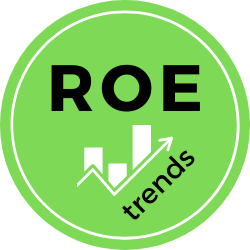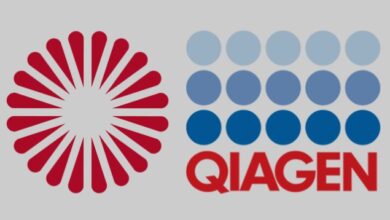Amgen Stock Analysis

Amgen Inc. (AMGN) is a pioneering force in the biotechnology industry, renowned for developing innovative therapies for serious illnesses. With a focus on areas such as oncology, inflammation, bone health, and cardiovascular disease, Amgen has introduced numerous life-changing medicines to the market. However, the company faces challenges, including increasing competition from biosimilars and the need to replenish its product pipeline. This Amgen stock analysis provides a comprehensive examination of the company’s Return on Equity (ROE), growth strategy, strengths, weaknesses, and the competitive landscape within the dynamic biopharmaceutical industry.
What is ROE, and Why Does it Matter for AMGN Investors?
Return on Equity (ROE) is a crucial financial metric that measures a company’s profitability relative to shareholders’ equity. A higher ROE generally indicates better financial performance and stronger returns for investors holding AMGN stock. Understanding ROE is vital for assessing the investment potential of Amgen.
Amgen’s ROE: A History of Strong Performance and Adaptation
| Year | ROE (%) |
|---|---|
| 2013 | 31.1 |
| 2014 | 34.5 |
| 2015 | 38.2 |
| 2016 | 41.7 |
| 2017 | 137.2 |
| 2018 | 67.7 |
| 2019 | 48.9 |
| 2020 | 55.6 |
| 2021 | 77.0 |
| 2022 | 63.2 |
| 2023 | 58.5 |
| 2024 | 55.0 |
Amgen has an impressive track record of financial performance, and its ROE over the past decade reflects this success. The company has consistently delivered strong returns for investors, demonstrating its ability to innovate, bring new drugs to market, and manage its operations effectively.
Key ROE Trends in Amgen Stock Analysis:
- Exceptional Profitability: Amgen has consistently maintained a high ROE, often exceeding 40%, indicating exceptional profitability and efficient use of shareholder investments. This performance is significantly higher than the average ROE for most pharmaceutical companies.
- Peak Performance: The ROE reached an extraordinary peak of 137.2% in 2017, driven by strong sales of key products, cost optimization measures, and potentially one-time events impacting financial reporting.
- Sustained High ROE: While ROE has moderated from its peak, it has remained robust, generally exceeding 50%. This indicates Amgen’s continued ability to generate strong returns for investors.
- Potential Moderation: The projected ROE for 2024 shows a slight decline, which could be attributed to increased competition from biosimilars, investments in new drug development, and other factors affecting the biopharmaceutical sector.
Investors should consider this ROE data alongside other financial metrics and qualitative factors, such as growth prospects, the drug pipeline, and competitive positioning, to make informed investment decisions in the context of this Amgen stock analysis.
Understanding Amgen: A Focus on Serious Illnesses
To fully assess Amgen’s investment potential, it’s essential to look beyond its financial performance and consider its strategic direction, strengths, weaknesses, and the competitive landscape.
Amgen’s Mission: “To Serve Patients”
Amgen’s mission is to serve patients by developing and delivering innovative human therapeutics. This mission includes a strong commitment to:
- Biotechnology Innovation: Pioneering the development of biologic therapies for serious illnesses.
- Focus on Key Therapeutic Areas: Concentrating its research and development efforts on oncology, inflammation, bone health, cardiovascular disease, and nephrology.
- Global Reach: Expanding access to its medicines worldwide.
- Sustainability: Operating in an environmentally responsible and sustainable manner.
Strengths:
- Strong Portfolio of Biologics: Amgen has a diverse portfolio of successful biologic therapies, including Enbrel (rheumatoid arthritis), Neulasta (neutropenia), Prolia (osteoporosis), and Repatha (high cholesterol).
- Biosimilar Development: The company is actively developing biosimilars, which are more affordable versions of existing biologic drugs, to capture a growing market segment.
- Innovation Pipeline: Amgen has a pipeline of promising drug candidates at various stages of development, including treatments for cancer, cardiovascular diseases, and inflammatory disorders.
- Global Presence: With operations in numerous countries, Amgen effectively serves patients worldwide.
Weaknesses:
- Biosimilar Competition: Amgen faces increasing competition from biosimilars, which poses risks to revenue and profitability for some of its key products.
- Dependence on Key Products: While Amgen has a diversified portfolio, its performance heavily relies on the success of its blockbuster drugs.
- Pricing Pressures: The company faces ongoing pressure to control drug prices, which can impact profitability.
- Pipeline Challenges: Replenishing its pipeline with new blockbuster drugs is crucial for Amgen’s long-term growth.
Amgen’s Competitors: The Biopharmaceutical Landscape
Amgen competes in a global biopharmaceutical market alongside major players, including:
- Johnson & Johnson: A diversified healthcare giant with a broad portfolio of pharmaceuticals and consumer health products.
- Pfizer: A leading pharmaceutical company recognized for its innovative medicines and vaccines.
- Novartis: A global healthcare company focused on pharmaceuticals and eye care.
- Roche: A leading biotechnology company specializing in oncology, immunology, and diagnostics.
- Bristol Myers Squibb: A biopharmaceutical company focused on oncology, immunology, cardiovascular diseases, and fibrosis.
Amgen’s Key Projects:
- Oncology Pipeline: Developing new cancer therapies, including targeted therapies, immunotherapies, and antibody-drug conjugates. This includes promising drugs like Lumakras (lung cancer) and sotorasib (KRAS G12C inhibitor).
- Inflammation and Immunology: Expanding its portfolio of treatments for inflammatory and autoimmune diseases, such as Tezepelumab for asthma.
- Cardiovascular Disease: Creating new therapies for cardiovascular diseases, such as heart failure and high cholesterol.
- Biosimilars: Developing and commercializing biosimilars of existing biologic drugs to provide more affordable treatment options.
Amgen’s Future: Navigating the Evolving Biopharmaceutical Landscape
Amgen’s future will be shaped by its ability to continue innovating, bringing new therapies to market, and adapting to the evolving biopharmaceutical landscape. Key factors that will influence its success include:
- R&D Productivity: The company’s capacity to discover and develop new, effective treatments will be crucial for long-term growth.
- Commercial Success: Successfully launching and marketing new drugs and biosimilars will be essential for generating revenue and maintaining profitability.
- Competitive Landscape: Amgen must compete effectively with other biopharmaceutical companies in a dynamic market, particularly as biosimilars become more prevalent.
Is Amgen (AMGN) Stock a Good Investment?
Amgen is a leading biopharmaceutical company with a strong track record of innovation, a diverse portfolio of successful drugs, and a history of solid financial performance. The company is well-positioned to benefit from the growing demand for healthcare solutions. However, investors should carefully consider the risks and opportunities associated with investing in the biopharmaceutical industry, including competition from biosimilars, patent expirations, and regulatory challenges.





